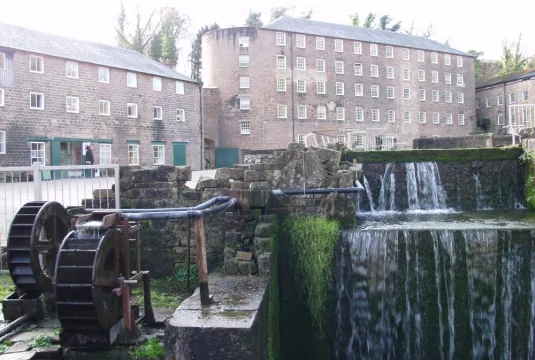Derwent Valley: A Journey Through Time and Industry

The Derwent Valley in Derbyshire stands as a living testament to the transformative power of industry, a picturesque landscape steeped in history and crowned with the prestigious recognition of World Heritage status. This lush valley, carved by the meandering River Derwent, unfolds like a storybook, each town and village along its course revealing chapters of a rich narrative that spans centuries.
At the heart of the Derwent Valley's allure is its industrial past, a legacy that shaped not only the landscape but also the course of the Industrial Revolution. Belper, one of the key towns nestled along the riverbanks, emerged as an industrial powerhouse in the late 18th century. The legacy of the Strutt family, particularly Jedediah Strutt and his revolutionary cotton mills, echoes through the streets of Belper. The North Mill, an iconic structure that stands proudly along the river, is a symbol of the town's industrial prowess and innovation. Today, it serves as a reminder of the pivotal role played by the Derwent Valley in the industrialization of England.
Matlock, another gem along the Derwent, paints a different facet of the valley's history. Renowned for its thermal springs, Matlock Bath became a fashionable spa town in the 19th century. Nestled amidst steep limestone cliffs, the town exudes a distinctive charm with its Georgian and Victorian architecture. The Heights of Abraham, reached by cable cars that traverse the Derwent Valley, offers panoramic views and further connects visitors to the region's industrial and geological history.
The journey along the Derwent Valley unfolds as a visual and historical feast. Rowsley, with its historic mills, and Cromford, home to Sir Richard Arkwright's pioneering cotton-spinning mill, stand as milestones of industrial innovation. Cromford Mill, now part of the Derwent Valley Mills UNESCO World Heritage Site, showcases the birthplace of the factory system, a revolutionary concept that forever changed the course of industry.
As the Derwent River winds its way through the valley, it graces the town of Matlock with its scenic beauty. Matlock Bath, nestled between limestone cliffs, became a popular destination in the Victorian era, drawing visitors to its thermal springs and enchanting surroundings. The Derwent Valley's ability to seamlessly blend industrial heritage with natural beauty is perhaps most pronounced in Matlock Bath, where visitors can explore the Derwent Gardens or take a leisurely stroll along the serene riverbanks.
The Derwent Valley's recognition as a UNESCO World Heritage Site in 2001 solidifies its status as a cultural and historical treasure. The inscription encompasses not only the industrial sites but also the natural beauty that frames this remarkable valley. The combination of industrial innovation and the harmonious coexistence with nature make the Derwent Valley a unique and globally significant landscape.
In conclusion, the Derwent Valley in Derbyshire is more than a scenic stretch of the River Derwent; it's a living canvas painted with the strokes of industrial progress, cultural significance, and natural splendor. From the bustling mills of Belper to the tranquil waters of Matlock Bath, each town and village along the Derwent's course contributes to a narrative that has left an indelible mark on the pages of history and earned its well-deserved place among the world's most cherished heritage sites.